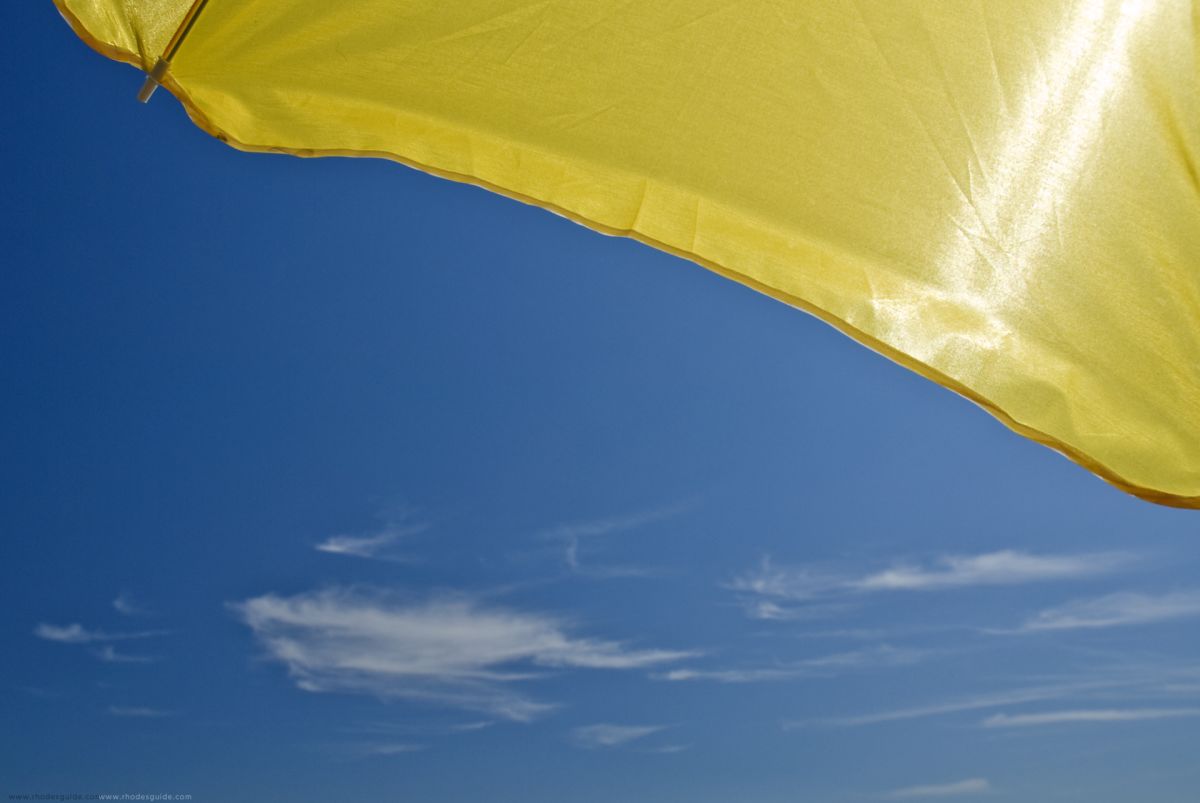Moreover, during the summer season in Greece, it is not unusual for individuals to experience heatstroke, even if it is a mild case. This is often due to the underestimation of how quickly the sun can affect one's body. If you are not accustomed to living in a warm climate, even a few hours of sun exposure without proper precautions can lead to significant health issues.
IMPORTANT NOTICE
All information and health tips available on this page are for general informational purposes only. The Content is not intended to be, and cannot be, a substitute for professional medical advice, diagnosis, or treatment.
Who is mostly affected?
The elderly, young children and people with specific medical conditions are considered to be most vulnerable to sunburns and heat-strokes. Also, the whiter you skin, the most vulnerable you are to sunburns as well.
The following people should take extra care to avoid UV skin damage:
- Babies and children
- Fair skinned people
- People with red or fair hair
- People with light coloured eyes
- People with lots of freckles or moles
- Anyone with a previous history of sunburn
- Anyone that is using sun beds
- Anyone with a personal or family history of skin cancer
- Anyone with certain medical conditions such as albinism, or those that are immunocompromised
- Anyone taking drugs which may increase photo-sensitivity, such as tetracyclines (including doxycycline), oral hypoglycaemic drugs and diuretics

How can you avoid a sunburn?
- Use a good sunscreen, with a minimum SPF of 30 for adults and adolescents and 50 for younger children. Please take note that UV radiation, which is the cause for sunburns, is also affecting you when you are not directly exposed to the sun. So if you are under an umbrella on the beach, you still should apply sunscreen. Also, some umbrellas, like ones that are made of thin cloth or have small gaps, are not doing a very good job in blocking direct UV radiation
- While you bathe in the sea or a swimming-pool, the water does not protect you from sunburns. If you wish to swim during high noon, make your visits to the water short
- Keep babies out of direct sun. Some sunscreens can be absorbed through babies skin, and should not be used. Also, babies are in grave danger of overheating. Because they are so small, they cannot cope with extremes of temperature
- Drink plenty of water. Water is superior to almost all other liquids when out in the sun. Sodas and other sugary drinks actually can make you thirstier, and alcoholic beverages act like a diuretic and dehydrate you
- limit your time in the sun. Go easy at first. A good idea is to avoid direct exposure during high noon, from 10:00AM to 16:00PM, especially in June, July and August when the sun is at it's prime. If you choose to go to the beach during high noon, make it as short as possible, or make sure you are constantly under the shadow of an umbrella
- Sunscreen needs to be applied 20 - 30 minutes before sun exposure
- Keep in mind that 80% of UVB rays can reflect from surfaces such as water and sand, and increase UV exposure. UVA rays can penetrate through glass, such as your car window.
What to do if you get a sunburn?
- If you get a sunburn, it can act just like a thermal burn. That is, severe burns will blister
- The pain of a sunburn does not start until 2-4 hours after the burn actually occurs. So, if you wait until you actually feel the sunburn, you are in trouble
- If you get a sunburn, get inside to cool off and drink plenty of water. A cool bath, shower or damp towel will help the pain. You may as well visit a pharmacy which can provide some analgesics. Cover sunburnt skin from direct sunlight until skin has fully healed
- Apply aftersun cream or spray, like aloe vera (you can find those in Pharmacies).
- Stay out of the sun
- Drink plenty of water to cool down and prevent dehydration
- If blisters form, do not pop them. Let them drain on their own, trim away the dead skin with small clean scissors, then apply antibacterial ointment. In this case, it may also be a good idea to visit a doctor.
- Do not put ice or ice packs on sunburnt skin
- Do not wear tight-fitting clothes over sunburnt skin
What are the signs of heat exhaustion and heatstroke?
Heat exhaustion is not usually serious if you can cool down within 30 minutes. If it turns into heatstroke it needs to be treated as an emergency.
- High body temperature. A core body temperature of 104 F (40 C) or higher, obtained with a rectal thermometer, is one of the the main signs of heatstroke.
- Altered mental state or behavior. Confusion, agitation, slurred speech, irritability, delirium, seizures and coma can all result from heatstroke.
- Alteration in sweating. In heatstroke brought on by hot weather, your skin will feel hot and dry to the touch.
- However, in heatstroke brought on by strenuous exercise, your skin may feel dry or slightly moist.
- Nausea and vomiting. You may feel sick to your stomach or vomit.
- Flushed skin. Your skin may turn red as your body temperature increases.
- Rapid breathing. Your breathing may become rapid and shallow.
- Racing heart rate. Your pulse may significantly increase because heat stress places a tremendous burden on your heart to help cool your body.
- Headache.
Seek immediate medical attention if:
- Your skin is blistered or swollen
- Your temperature is very high, or you feel hot and shivery
- You feel very tired, dizzy and sick
- You have a headache and muscle cramps
- Your baby or young child has sunburn


 English
English
 Deutsch
Deutsch
 Ελληνικά
Ελληνικά